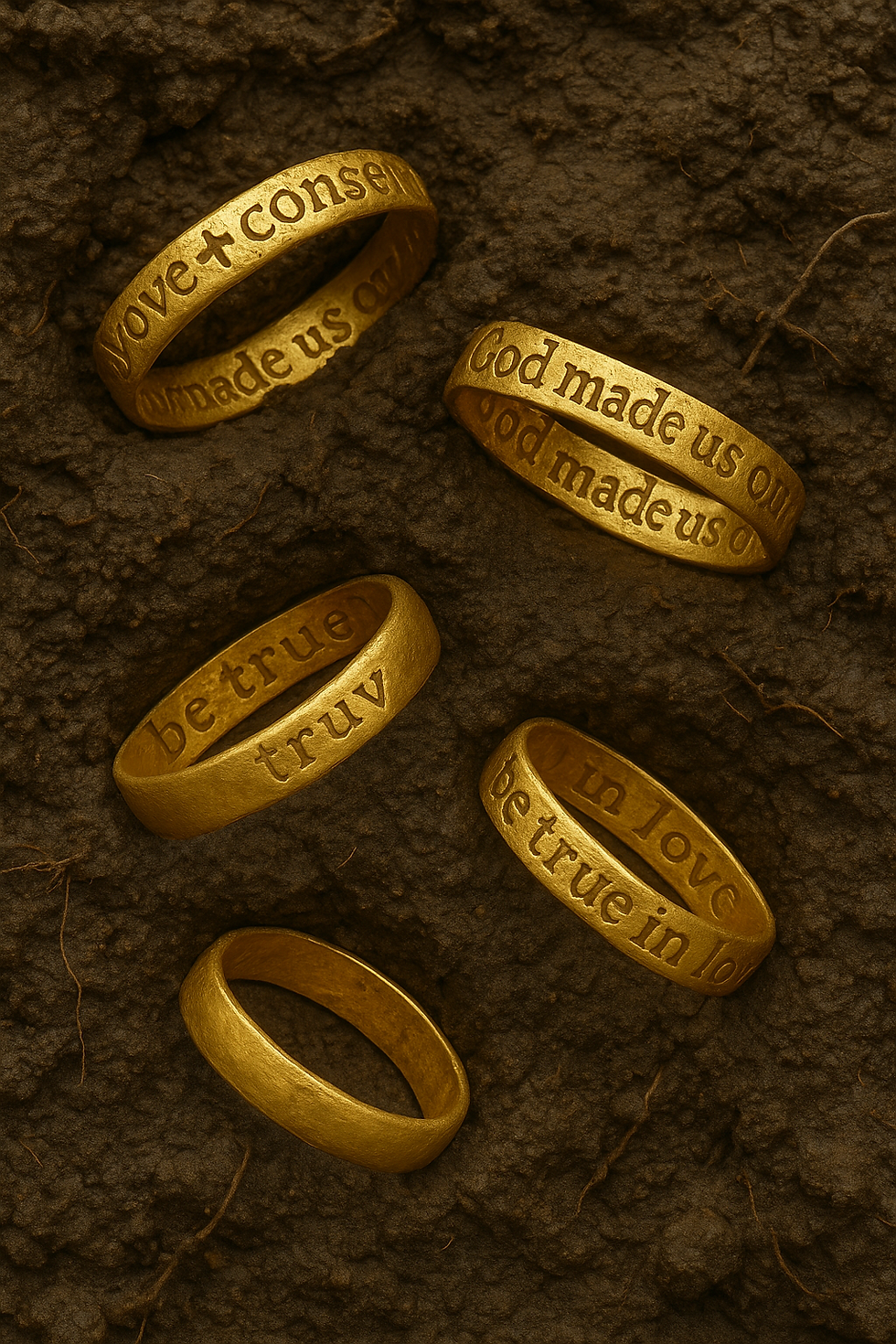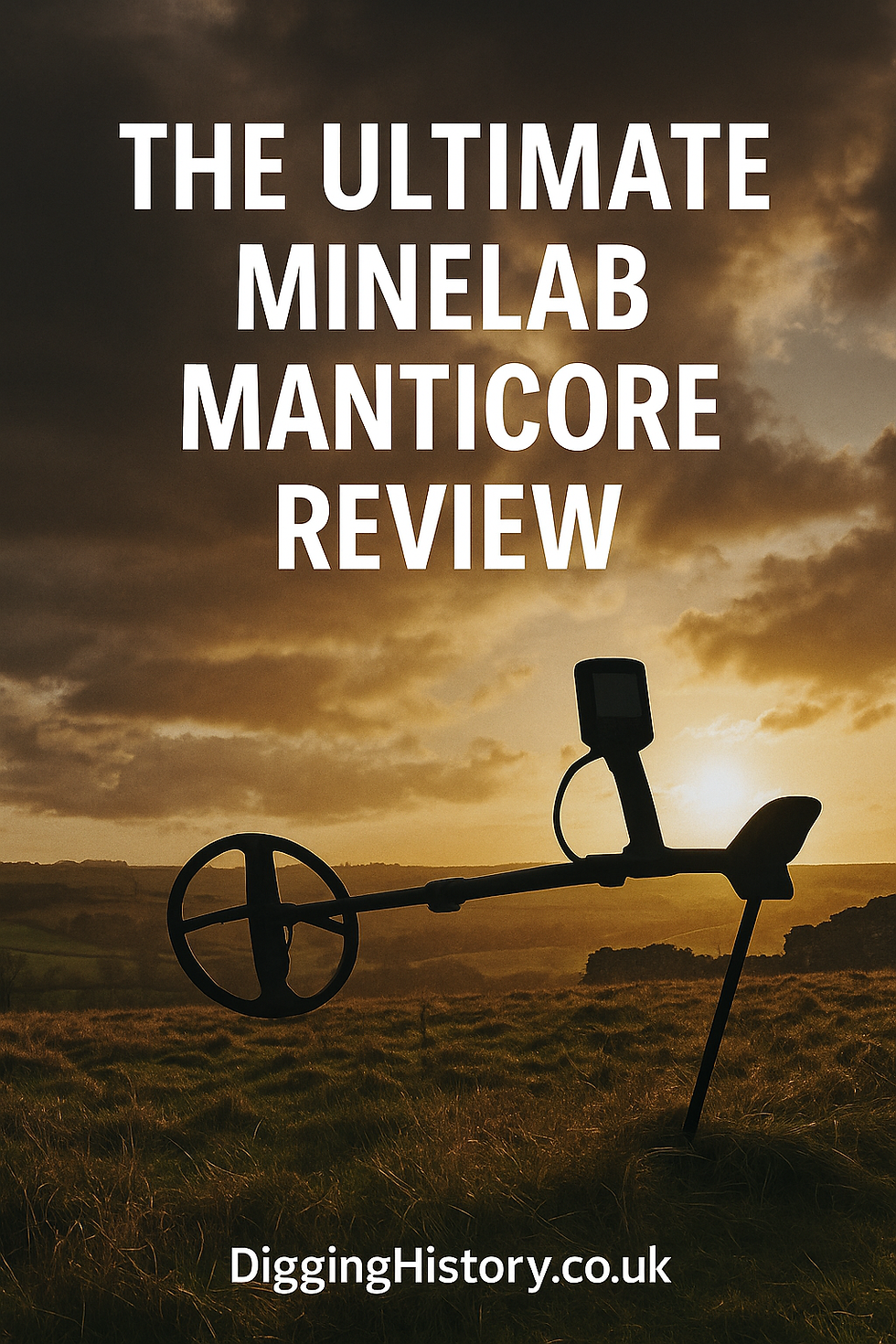“Tudor Treasure UK: Coins, Hoards, Jewellery & Detecting Finds (1300–1600)”
- DiggingHistory.co.uk
- Sep 24
- 5 min read
From Plague to Pageantry
Between AD 1300 and 1600, Britain transformed. The late Middle Ages brought plague, famine, and civil war, while the Tudors ushered in the Reformation, overseas exploration, and cultural renaissance. For detectorists, this era is one of the richest: hammered coins, gold rings, pilgrim badges, seals, reliquaries, and jewellery often surface from these centuries.
The period’s instability, wars, religious upheaval, and dynastic struggles, explains why so much treasure was buried and never retrieved. This guide explores Late Medieval and Tudor Britain through the lens of metal detecting: what survives in the soil, where to find it, and how to report responsibly.

Britain at a Glance (1300–1600)
14th century – The Black Death (1347–51) kills a third of the population. Coin hoards buried during crises.
15th century – Wars of the Roses (1455–1487) cause political turmoil. Artefacts linked to warfare and nobility.
16th century – The Tudor dynasty: Henry VII, Henry VIII, Edward VI, Mary I, Elizabeth I. Reformation transforms religion, pilgrimage ends, and new coinage appears.
Each phase left unique signals for today’s detectorists.
Coins: From Hammered Pennies to Tudor Shillings

Late Medieval Coinage (1300–1485)
Edward III introduced the gold noble (1344), the first successful English gold coin.
Groats and half-groats became common.
Hammered silver pennies, halfpennies, and farthings circulated widely.
Civil wars saw debased coinage and emergency issues.
Tudor Coinage (1485–1603)
Henry VII continued medieval types but improved gold issues.
Henry VIII issued iconic testoons (shillings) bearing his portrait, and debased the coinage in the 1540s.
Edward VI introduced new denominations.
Elizabeth I restored stable silver and gold, including sixpences and shillings with her portrait.
Detectorist finds:
Fishpool Hoard (Nottinghamshire, 1966) – Over 1,100 gold coins and jewellery from the Wars of the Roses, buried c. 1464.
Middleham Hoard (Yorkshire, 1993) – 5,000+ silver coins from the late 15th century.
Ryedale Hoard (Yorkshire, 2020) – included rare Henry VIII sovereign penny.
Jewellery, Rings & Precious Metalwork

Gold & Gemstone Rings
Posy rings inscribed with mottos of love or faith.
Ecclesiastical rings set with gemstones.
Signet rings engraved with personal seals.
Brooches & Pendants
Gilt copper-alloy brooches with religious or heraldic motifs.
Reliquary pendants and crosses.
Tudor Ornaments
Decorative dress fittings of gilt bronze or silver.
Small devotional pendants with saints or crosses.
Detectorist example:
Gold ring of Richard III’s retainer (2015, near Bosworth) – found by a detectorist, engraved with a boar, Richard’s emblem.
Pilgrim Badges, Ampullae & the End of Pilgrimage

Medieval Pilgrimage (1300–1530s)
Lead pilgrim badges depicting saints, shrines, and miracles.
Ampullae with holy water, often stamped with scallop shells.
These survive in great numbers in fields across southern England.
After the Reformation (1530s–1540s)
Henry VIII dissolved monasteries and outlawed pilgrimage. Badges disappear from the record, so their presence helps date fields to pre-Reformation use.
Seals, Tokens & Everyday Artefacts

Lead seals marked cloth and goods for trade.
Merchant tokens circulated in towns and markets.
Household items – knives, keys, buckles, and shears often surface.
Weights – for merchants and apothecaries.
These small items show the growth of towns and markets in the period.
Warfare & Rebellion
Wars of the Roses (1455–1487)
Battlefields and castles saw wealth hidden in uncertain times. Many hoards date to this era.
Tudor Conflicts
Pilgrimage of Grace (1536) – northern rebellion against Henry VIII’s reforms.
Spanish Armada (1588) – though little material survives inland, the period saw military musters and weaponry.
Detectorists sometimes recover:
Sword fittings and scabbard mounts.
Buckles and harness fittings.
Cannon shot and musket balls (late Tudor).
Famous Detectorist & Hoard Finds
Fishpool Hoard (Nottinghamshire, 1966)
Over 1,100 gold coins and jewellery from Wars of the Roses, buried c. 1464. Found during building work but remains one of Britain’s greatest medieval hoards.
Middleham Hoard (Yorkshire, 1993)
5,000+ silver coins, hidden during the turmoil of the 15th century. Discovered by detectorists.
Chew Valley Hoard (Somerset, 2019)
Though Norman in part, it contained coins spanning into the early Tudor period, showing continuity of hoarding habits.
Ryedale Hoard (Yorkshire, 2020)
Detectorists uncovered coins and objects including a Henry VIII sovereign penny, expanding our knowledge of Tudor circulation.
Bosworth Gold Ring (2015)
A detectorist found a gold signet ring engraved with a boar, linked to Richard III’s supporters.
Detecting the Late Medieval & Tudor Landscape
Castles & Battlefields
Surrounding lands often yield coin scatters, fittings, and weapon fragments.
Abbeys & Monasteries
Sites dissolved by Henry VIII were once rich in artefacts. Outlying fields may still produce badges, ampullae, and devotional items.
Towns & Markets
Expanding urban centres spilled into fields. Tokens, seals, and hammered coins appear.
Manor Houses & Fields
Lost rings, dress fittings, and coins mark elite and everyday activity alike.
Recognising Late Medieval & Tudor Treasure UK
Coins: hammered nobles, groats, testoons, sixpences, shillings.
Jewellery: posy rings, reliquaries, brooches.
Pilgrim badges: pre-1530s lead-alloy badges.
Seals: merchant and cloth seals.
Harness pendants: heraldic, enamelled.
Everyday: knives, keys, weights, buckles.
Laws & Responsible Detecting
England, Wales & NI – Treasure Act 1996
2+ coins over 300 years old = Treasure.
Gold/silver artefacts over 300 years old = Treasure.
Must report to coroner via FLO.
Scotland – Treasure Trove
All significant finds claimable by the Crown.
Report to Treasure Trove Unit.
Always:
Obtain written landowner permission.
Avoid scheduled sites.
Record finds with PAS or TTU.
What Late Medieval & Tudor Finds Teach Us
Fishpool & Middleham Hoards – political unrest led to wealth concealment.
Rings & Jewellery – personal devotion, love, and identity.
Pilgrim Badges – end of pilgrimage culture under Reformation.
Tokens & Seals – trade expansion in towns.
Tudor Coinage – portraits of monarchs mark the shift to recognisable modern money.
Practical Tips for Detecting
Research medieval manors – Tudor fields often hide high-status jewellery.
Overlay old maps – market sites and abbeys produce rich finds.
Expect hammered coins – worn but identifiable with practice.
Look for lead – pilgrim badges and tokens often fragment in soil.
Remember context – a single posy ring may be more significant than a handful of coins.
FAQs
Where are Tudor treasure finds most common in the UK? Across England, especially around former monasteries, manors, and market towns.
What’s the most famous Tudor hoard? The Fishpool Hoard with 1,100+ gold coins and jewellery from the Wars of the Roses.
Can detectorists find Tudor rings? Yes, posy rings and signet rings are regularly reported to PAS.
Are medieval and Tudor finds Treasure? Coins and precious objects over 300 years old must be reported under the Treasure Act.
Rings, Roses & Reformation Beneath the Soil
From the Black Death to Elizabeth’s reign, Britain’s Late Medieval and Tudor period left treasures great and small. Detectorists uncover hammered coins, pilgrim badges, rings, and hoards that reveal the struggles, beliefs, and ambitions of the age.
Every Tudor signal tells a story, of kings and queens, merchants and pilgrims, rebels and reformers. By detecting responsibly, you become part of the living record of Britain’s most transformative centuries.
Thank You for Reading
Thank you for exploring the Late Medieval and Tudor era with us. From hammered coins and pilgrim badges to gold rings and hoards, every discovery brings history back to life.
👉 If you enjoyed this guide, please share it with fellow detectorists, friends, and history enthusiasts. Together we can keep uncovering and preserving Britain’s incredible past.





Comments